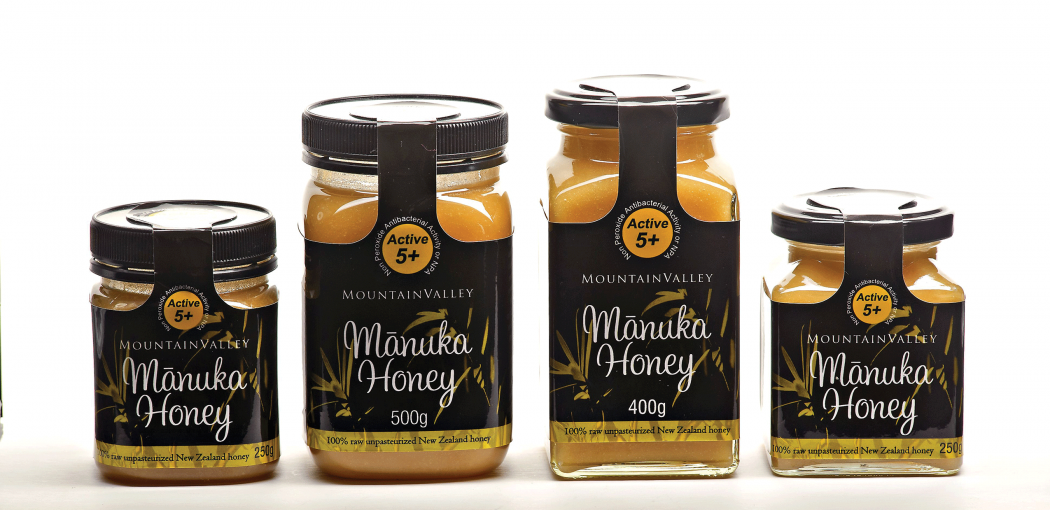by- Alan Harman
Organized crime is targeting New Zealand’s lucrative honey industry, threatening its NZ$242-million- (US$176.5-million-) a-year export market.
At a recent meeting, New Zealand Police and Apiculture New Zealand agreed to work together to find solutions to the growing problem of organized beehive thefts that are costing apiarists millions of dollars.
The big attraction is manuka honey, which last season saw bulk prices reach NZ$60 a kg (US$19.88/lb.).
Consumer New Zealand magazine notes a 500-gram (17.6 oz.) jar of manuka honey sells locally for NZ$73 (US$55.22), more than for a bottle of champagne.
New Zealand is the third-largest global exporter of honey on a value basis behind China and Argentina. However, most of their products are significantly lower value than New Zealand honey, with an average export price of 91 cents to US$2.73 a lb., compared with New Zealand at US$8.18/lb.
The government and a consortium of private sector companies aim to boost the value of the manuka honey industry to NZ$1.2 billion (US$874.7 million) a year by 2028.
With the sector now awash with money, Apiculture NZ chief executive Daniel Paul says the crime problem has escalated to the point that a coordinated, nationwide solution must be found.
“Previously it’s been sort of a regional thing, you know, a hive’s been stolen somewhere around the country and the local police will be involved.” Paul tells Newstalk ZB radio. “We would like to address this issue nationwide so that we have a coordinated response.”
Police are meeting with the Ministry of Primary Industries, Apiculture NZ, government food safety and biosecurity services company AsureQuality, and associated government and non-government organizations involved in the honey industry.
A working group to formulate a national, coordinated standard is planned to prevent further increases in the theft of beehives and honey.
“We do not believe this is just a few individuals, but it is potentially criminal activity occurring on a much wider scale,” NZ Police community policing coordinator Senior Sgt. Alasdair Macmillan tells Bee Culture.
“Hopefully a coordinated response will prevent more beekeepers from becoming victims, and will improve the intel we have on these offenders.”
The working group will look at the ways to gather improved intelligence about thefts and how stolen hives are processed, and to monitor hive movements more proactively.
In the meantime, police are encouraging beekeepers to take their own actions.
“Keep beehives out of sight from potential thieves,” Macmillan says. “This could mean within a locked fenced-off area or hidden behind property.
“Use motion sensor lights and security cameras where possible. Keep serial numbers or another identification number engraved on hives so they can be easily identified if stolen.”
The criminal focus on the industry comes as a Westpac Bank report said New Zealand’s honey exports had risen 3,000% in 16 years.
NZ Police community policing coordinator Senior Sgt. Alasdair Macmillan says crime now is costing apiarists millions of dollars a year.
Macmillan is looking to the public to help prevent these thefts, which are particularly common in the Northland and central regions of the North Island.
In the most recent incident, NZ$500,000 (US$364,510) worth of hives were stolen from a pine forest in Northland. Police made an arrest in this case and charged a man over a number of beehive and honey thefts in the region.
Elsewhere, two men have been charged with stealing 65 beehives from a property near Whanganui, 125 miles northwest of Wellington.
Macmillan says the pair were arrested after police received information from the owners of the hives, which were later recovered from a property 24 miles from the crime scene.
“It’s common for thieves to shift the hives in small utes (pickups) or trailers in rural areas,” Macmillan says. “Even if people are not directly involved in the beehive industry, they can still help.”
They can do so, he says, by reporting suspicious vehicles carrying beehives to police and taking note of the registration number and description of the vehicle.
Apiculture NZ is the peak body representing the beekeeping and honey products industry. Its members include some of the country’s biggest beekeeping companies, many of which are major producers and exporters of high value manuka honey.
“We are discussing ways in which we can, with the assistance of police mount a planned, managed and sustained program to combat this problem,” CEO Paul says.
Paul says one proposal is to establish a central database to ensure that information about thefts and the people and organizations behind the thefts is shared more efficiently.
Crime information now is held regionally.
“All our major commercial members and even many non-commercial, hobbyist beekeepers are concerned about the growing trend of beehive thefts and we will be putting considerable effort into initiatives that will help beekeepers keep their hives safe,” Paul says.
Last year, ANZ Bank rural economist Con Williams said in a research report that medical grade manuka honey was fetching NZ$1,000 a kg (US$331.36/lb.).
Williams says information about the product is tightly guarded by producers.
“They’re trying to protect their own interests in markets so it’s hard to substantiate but there have been quite reliable reports from people I’ve spoken to that there’s a market at that kind of price point,” he said.
Williams says the price of Manuka honey varies hugely depending on its level of methylglyoxal, the medicinal compound that makes it so desirable.
“For the lowest quality/MGO purity, current prices range from NZ$18-$22/kg (US$5.96-US$7.20/lb.), for mid-range NZ$30-$50/kg (US$9.95-US$16.57/lb.), and top range NZ$50-$100/kg (US$16.57-US$33.15/lb.),” he says. “These figures were derived from actual results from several honey companies.”
The price of the Manuka honey continues to skyrocket, while the cost of table honey soared almost 50% earlier this year.
Queen bee breeder David Yanke told Radio New Zealand the high prices are bringing in a huge influx of new hives and keepers.
“Most of these beekeepers have very little experience and a lot of them are getting into the industry for all the wrong reasons,” he says.
Yanke says it’s reached the point where the only way things will improve is if there’s a price plummet – but, he adds, that’s a double edged sword.
The industry has bounced back from the arrival of Varroa mites in 2000 and the country’s honey bee population is growing rapidly.
“We are nearing 700,000 hives, up from 300,000 15 years ago,” Paul says. “Hive numbers grew by nearly 70,000 in the 2014-2015 year alone. There are close to 7,000 beekeepers in New Zealand and that number continues to grow each year as well.”
A recent nationwide bee loss survey found annual “natural” hive losses in New Zealand are only about 10%, much lower the most countries.
Recently, the Unique Manuka Factor Honey Association (UMFHA) applied for a trademark on manuka honey, a variant associated with Maori culture. Now, member companies are calling for their peers to protect the name globally.






